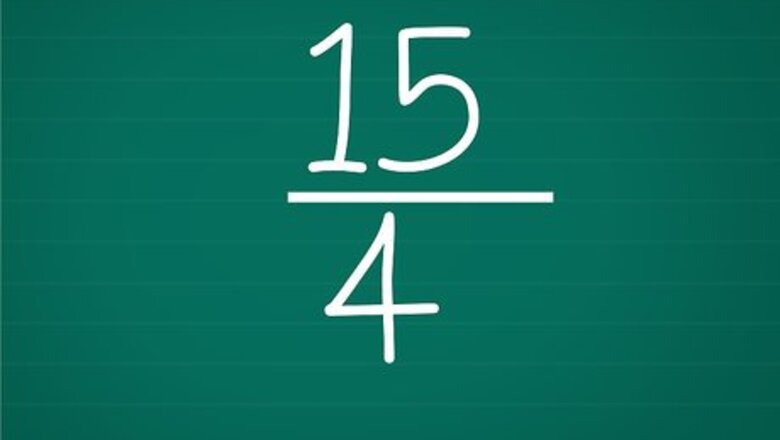
views
X
Research source
Division is the fastest way to do this, but there is an easier method included if you're having trouble with the first one.
- Use division; rewrite the improper fraction as a long division problem, then find the remainder and write the mixed number from your results.
- Without division, write down the fraction and recall all the fractions that equal 1—which is any number divided by itself.
- Split the fraction into two parts; find the second part and then simplify the fraction, repeating until you have the right number.
Using Division
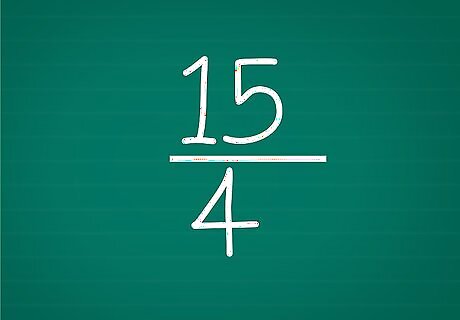
Start with an improper fraction. We'll use /4 for our example. This is an improper fraction because the numerator, 15, is greater than the denominator, 4. If you're not comfortable with fractions or division yet, start with the example below instead.
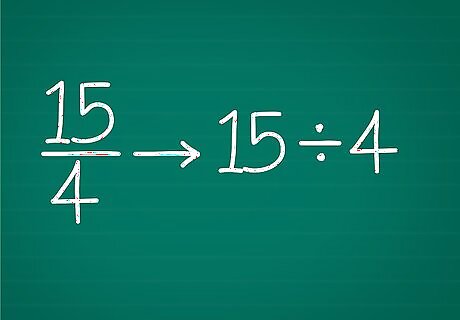
Rewrite it as a division problem. Write the fraction as a long division problem. Always write the numerator divided by the denominator. In our example, this is 15 ÷ 4.
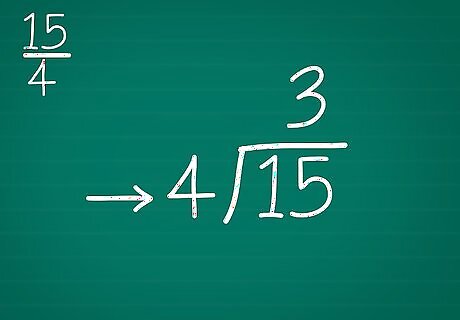
Begin solving the division problem. Review long division first if you're not sure what to do. This example will be easier to follow if you write out the long division problem as you read it: Compare 4 to the first digit, 1. 4 doesn't go into 1, so we need to include the next digit. Compare 4 to the first two digits, 15. How many times does 4 go into 15? If you're not sure, guess and see if you're right using multiplication. The answer is 3, so write 3 on the answer line, above the 5.
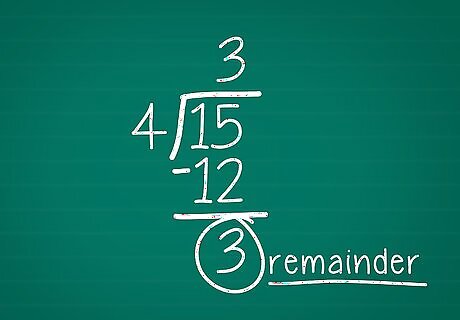
Find the remainder. Unless the numbers divide perfectly, there will be a remainder left over. Here's how to find the remainder in a long division problem: Multiply the answer by the divisor (the number on the left). In our example, that's 3 x 4. Write the result underneath the dividend (the number underneath the division bracket). In our example, 3 x 4 = 12, so write 12 underneath the 15. Subtract the result from the dividend: 15 - 12 = 3. This is the remainder
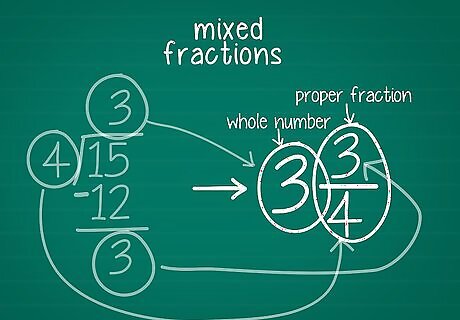
Write the mixed number using your results. A mixed number is a whole number, plus a proper fraction. After solving your division problem, you have everything you need to write this mixed number: The whole number is your answer to the division problem. In this case, that's 3. The numerator of the fraction is your remainder. In this case, that's also 3. The denominator of the fraction is the same as the denominator in the original fraction. In this case, that's 4. Write this as one mixed number: 3/4.
Without Using Division
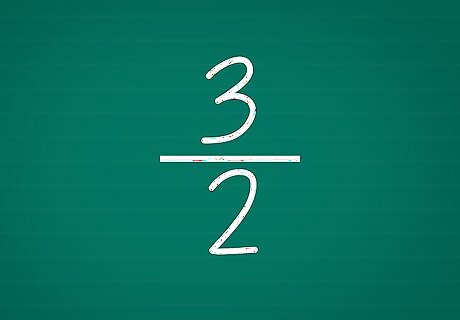
Write down the fraction. An improper fraction is any fraction with a top number larger than the bottom number. For example, is an improper fraction, because 3 is larger than 2. The top number of a fraction is called the numerator. The bottom number is called the denominator. This method will take a long time for large fractions. If the numerator is much larger than the bottom number, the division method above is much faster.
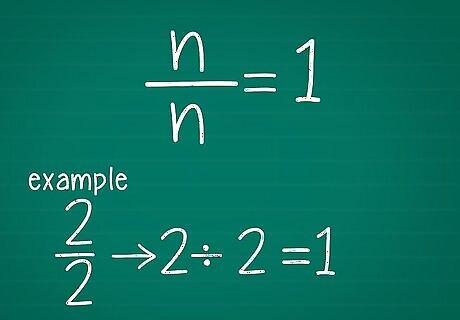
Remember which fractions equal one. Did you know that 2 ÷ 2 = 1? Or that 4 ÷ 4 = 1? In fact, any number divided by itself equals one. Fractions are exactly the same. /2 = 1, and /4 = 1, and even
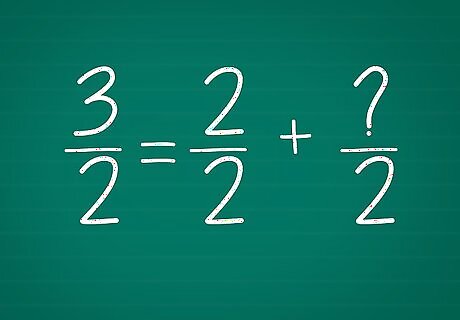
Split the fraction into two parts. That sounded like an easy way to turn a fraction into a whole number. Let's see if we can do that for part of our improper fraction: For /2 is an easy fraction to simplify, because the top and bottom numbers are the same. We want to take this out of the larger fraction, and find out what we have left behind. Write this down: .
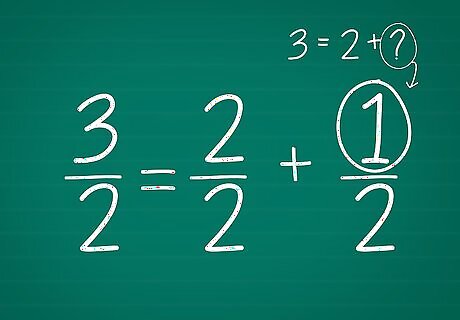
Find the second part. How do we turn that question mark into a number? If you don't know how to add and subtract fractions, don't worry. When the denominators (bottom numbers) are the same, we can ignore them and turn the problem into ordinary addition. Here's a step by step guide for our example,
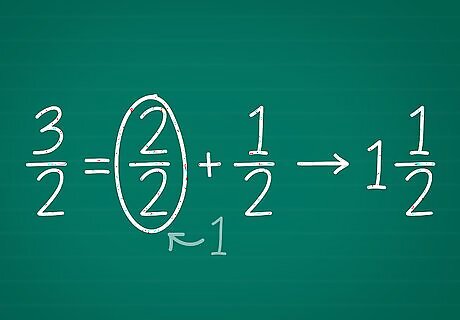
Simplify the fraction. Now we know our improper fraction is the same as /2 + /2. We also know that /2 = 1, just like any fraction with the same top and bottom number. That means you can cross out /2, and write 1 instead. Now we have 1 + /2, which is a mixed number! For this example, the problem is solved. Once you've found the solution, you don't need to write the + symbol anymore. Just write 1/2. A mixed number is a whole number plus a proper fraction. EXPERT TIP Joseph Meyer Joseph Meyer Math Teacher Joseph Meyer is a High School Math Teacher based in Pittsburgh, Pennsylvania. He is an educator at City Charter High School, where he has been teaching for over 7 years. Joseph is also the founder of Sandbox Math, an online learning community dedicated to helping students succeed in Algebra. His site is set apart by its focus on fostering genuine comprehension through step-by-step understanding (instead of just getting the correct final answer), enabling learners to identify and overcome misunderstandings and confidently take on any test they face. He received his MA in Physics from Case Western Reserve University and his BA in Physics from Baldwin Wallace University. Joseph Meyer Joseph Meyer Math Teacher Simplifying a fraction just changes the way the fraction is written. To simplify a fraction, you can cancel out the greatest common factor from the numerator and denominator or convert an improper fraction to a mixed number. This doesn't change the inherent value of the fraction.
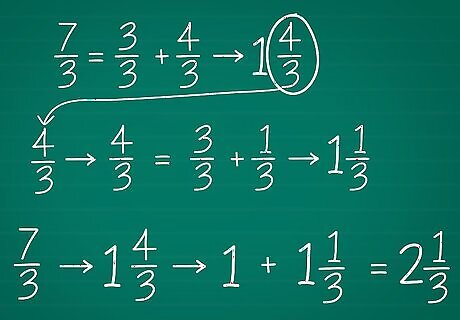
Repeat these instructions if the fraction is still improper. Sometimes, the fraction part of your answer will still be improper, with a numerator larger than the denominator. In this case, you can start again with that fraction, turning it into another mixed number. Don't forget to add the "1" back when you're done. Here's an example, turning /3 into a mixed fraction: /3 = /3 + /3 7 = 3 + ? 7 = 3 + 4 /3 = /3 + /3 /3 = 1 + /3 That fraction is improper, so ignore the 1 for now and do the same thing: /3 = /3 + /3 4 = 3 + ? 4 = 3 + 1 /3 = /3 + /3 /3 = 1 + /3 That fraction is proper, so we're done. Remember to add the 1 we ignored earlier: 1 + 1 + /3 = 2/3.













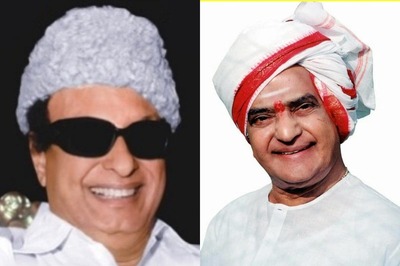





Comments
0 comment